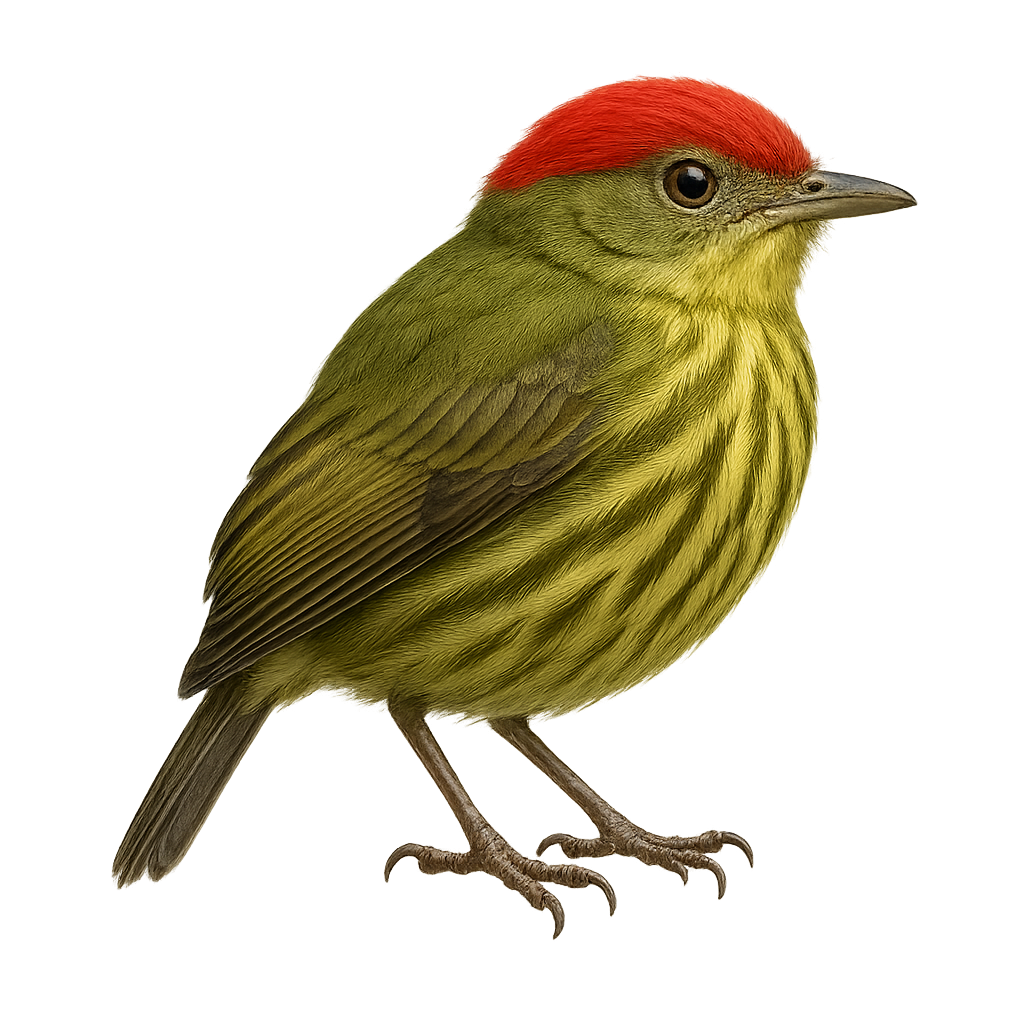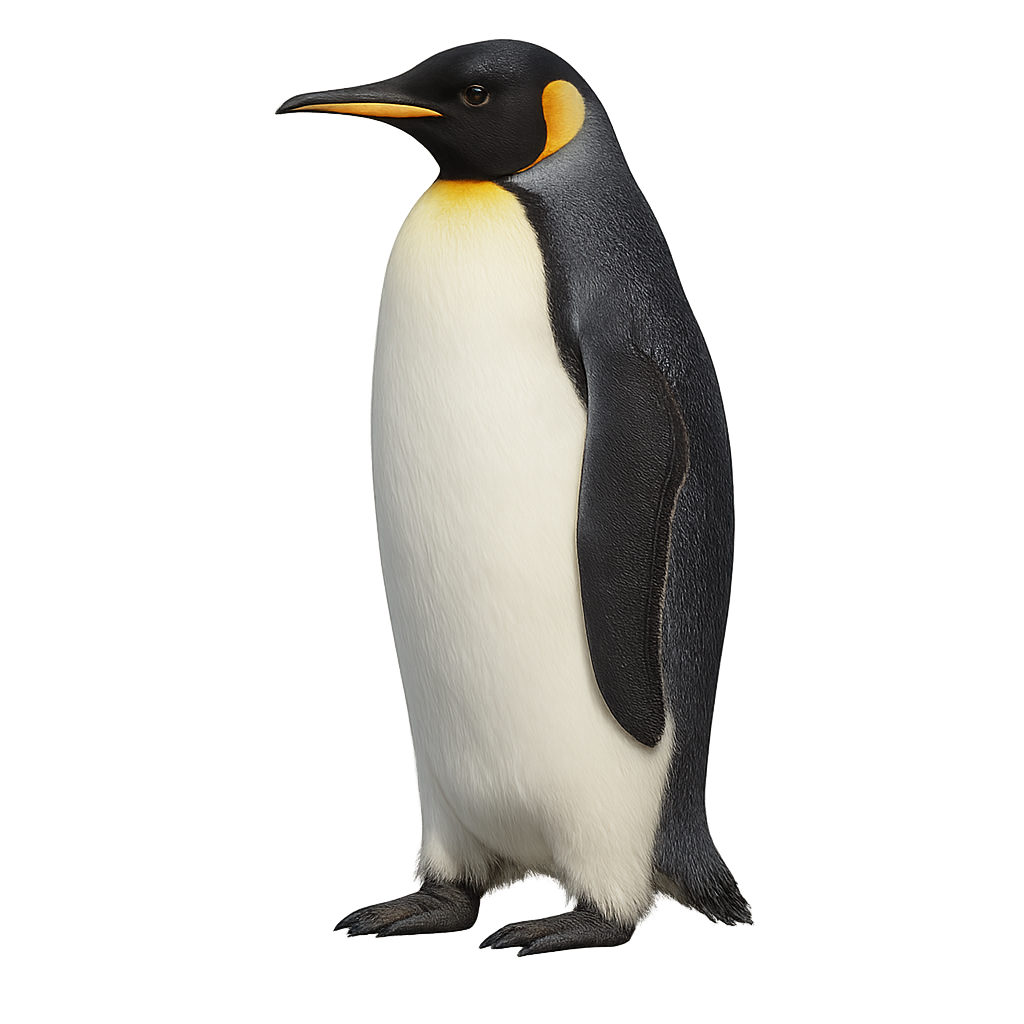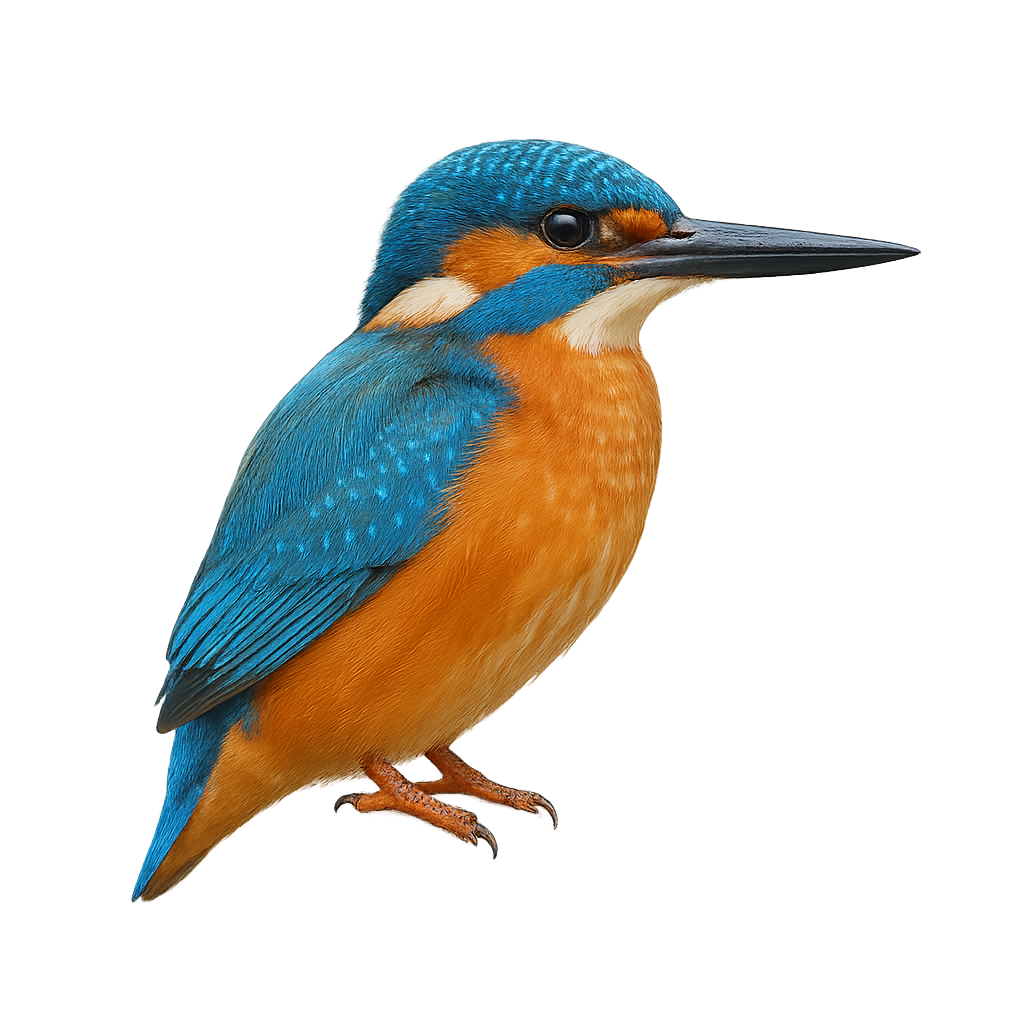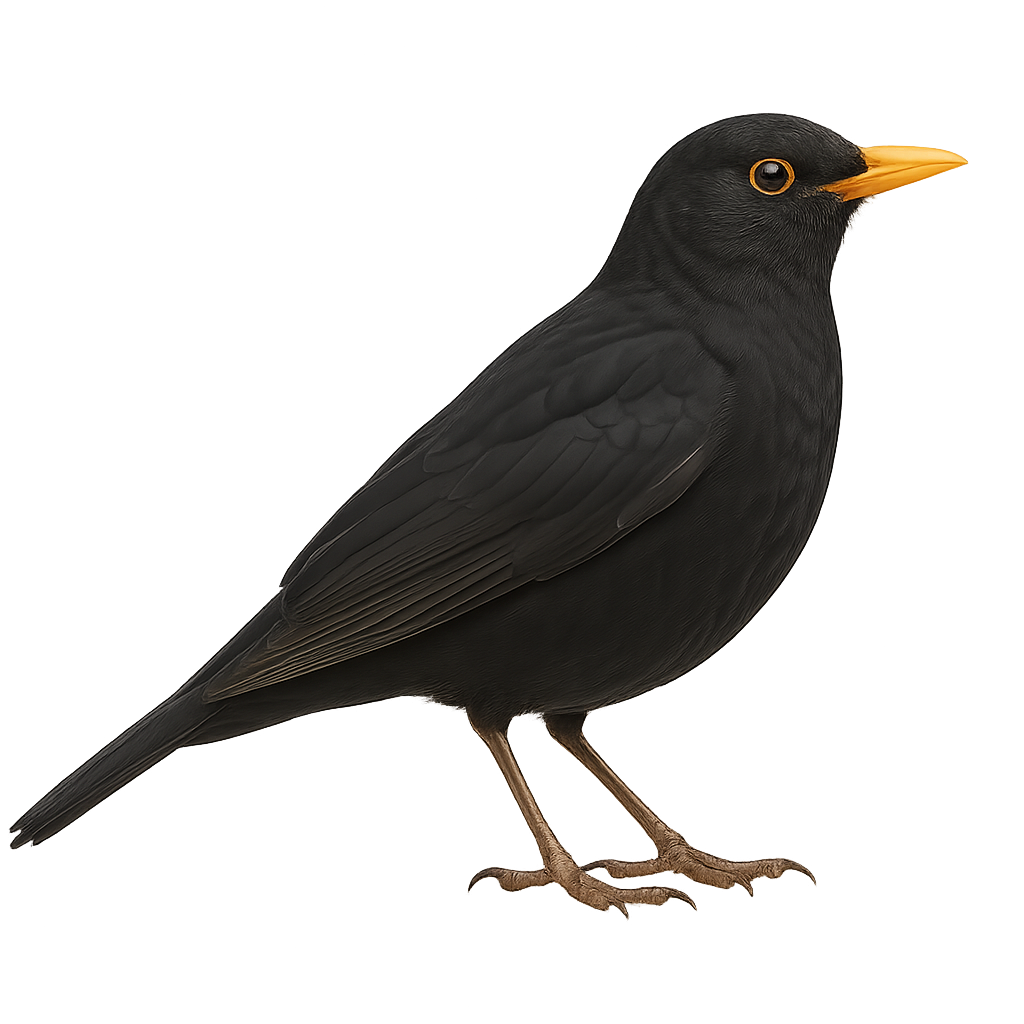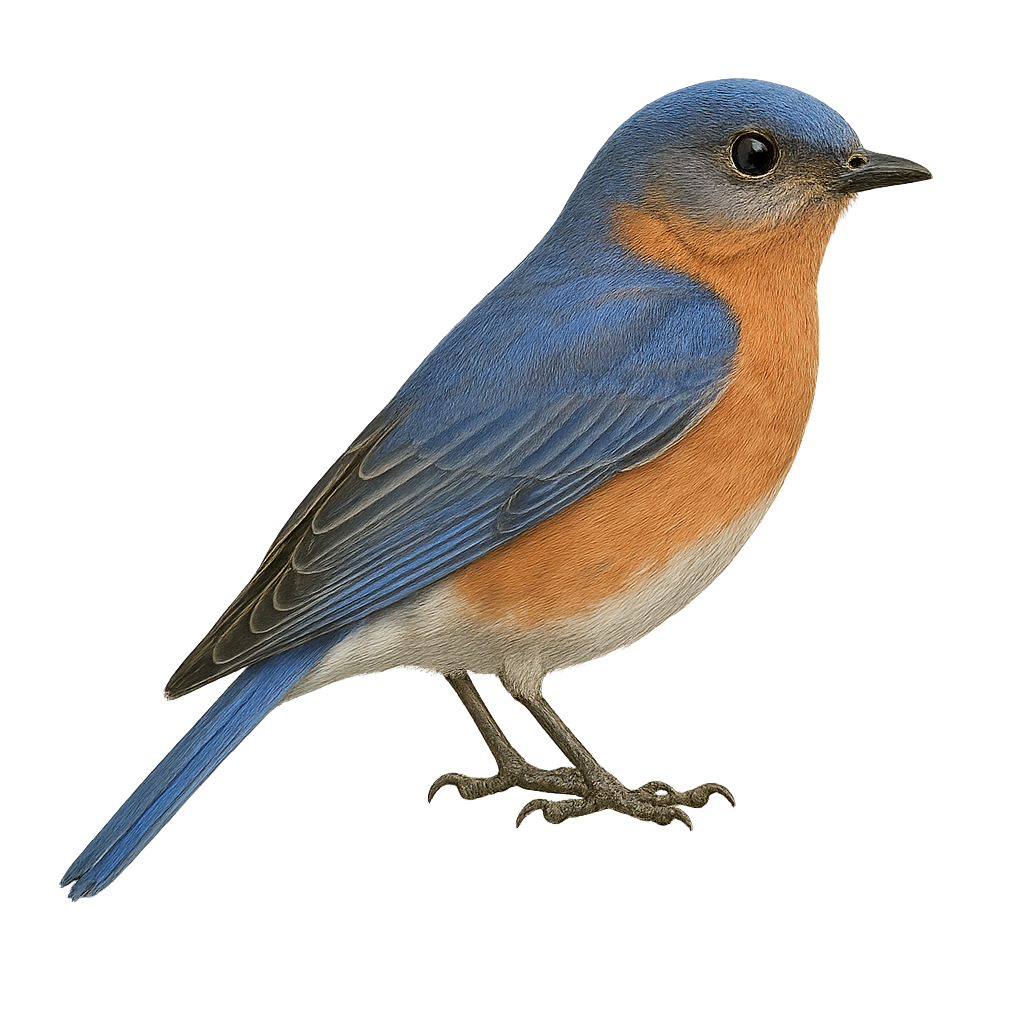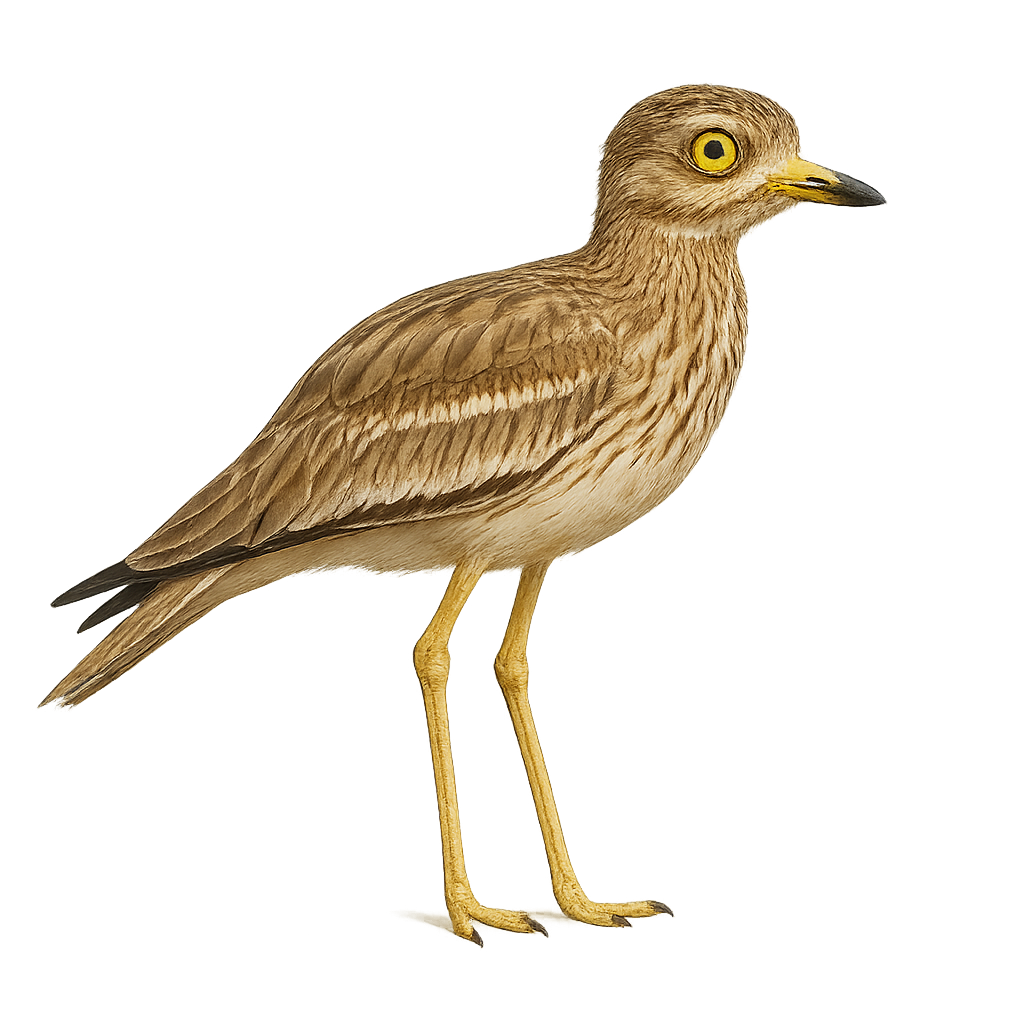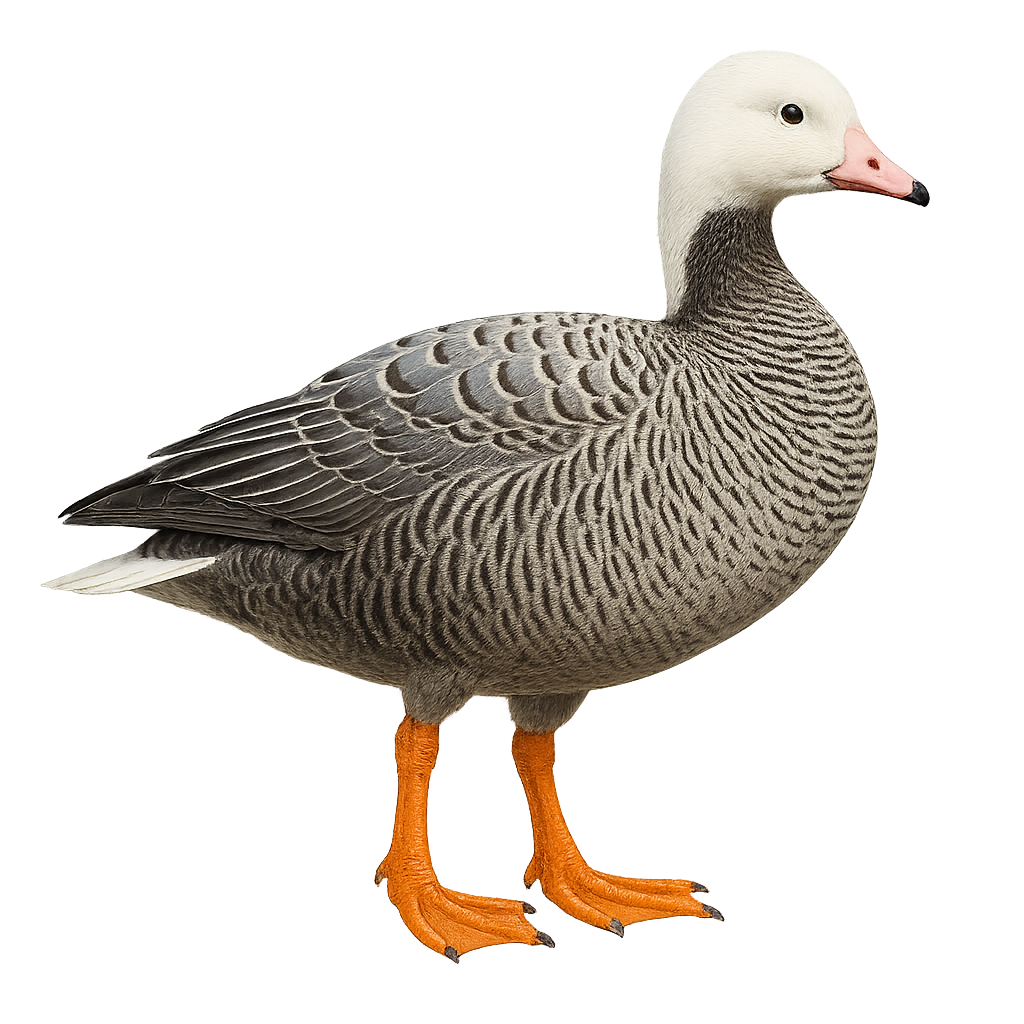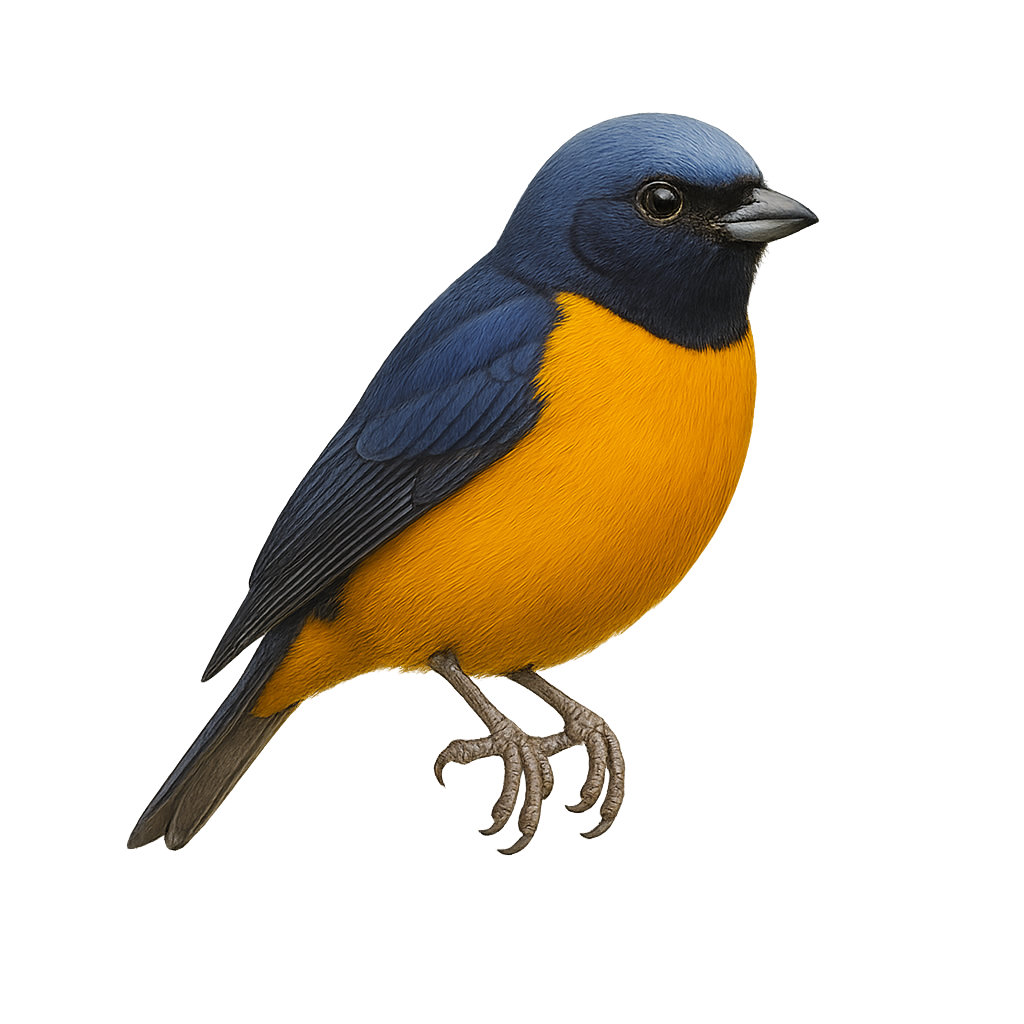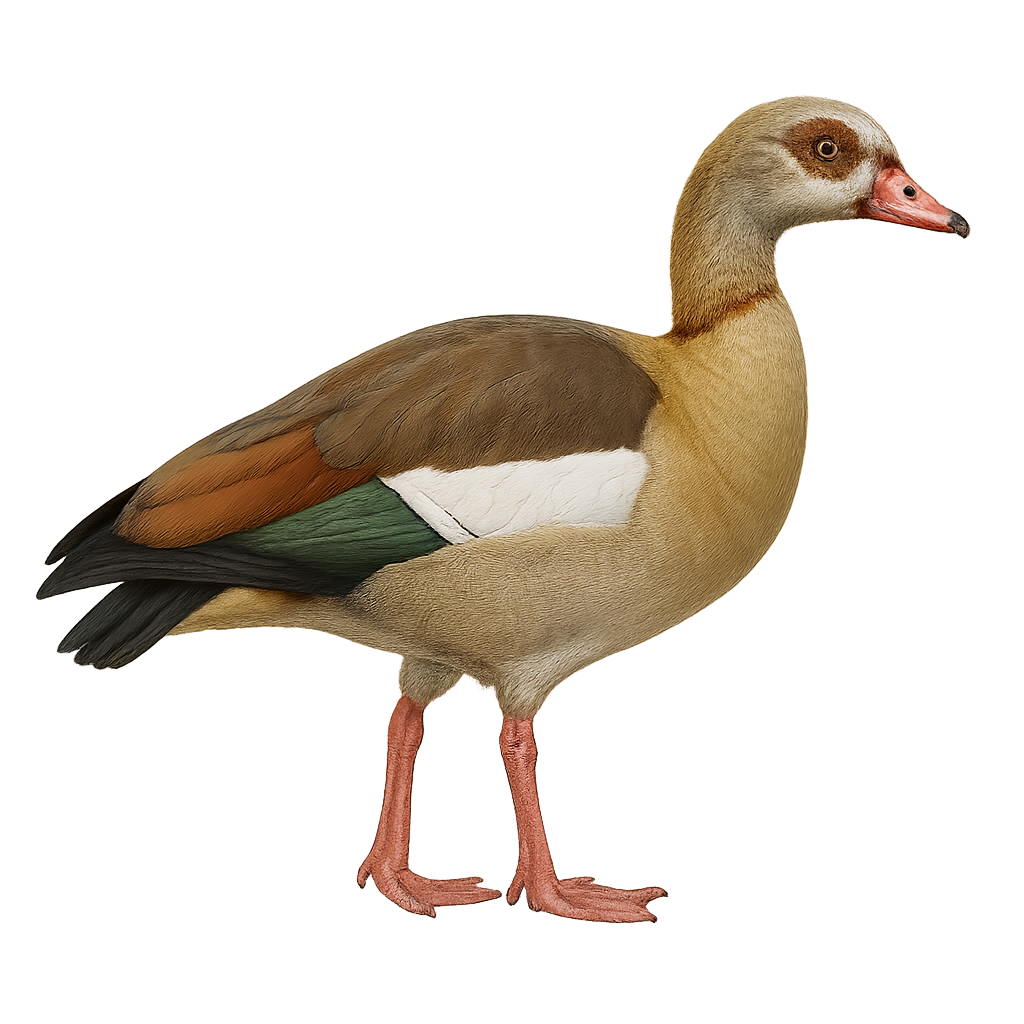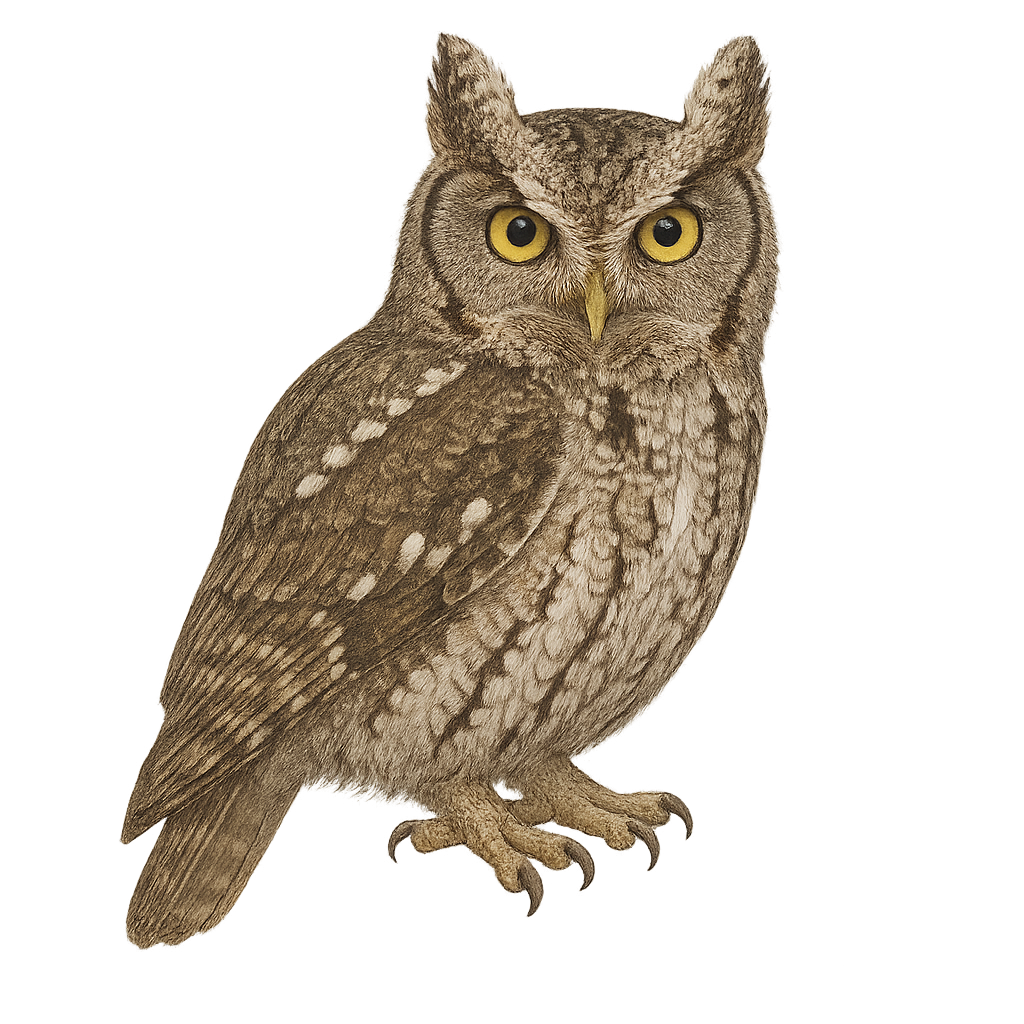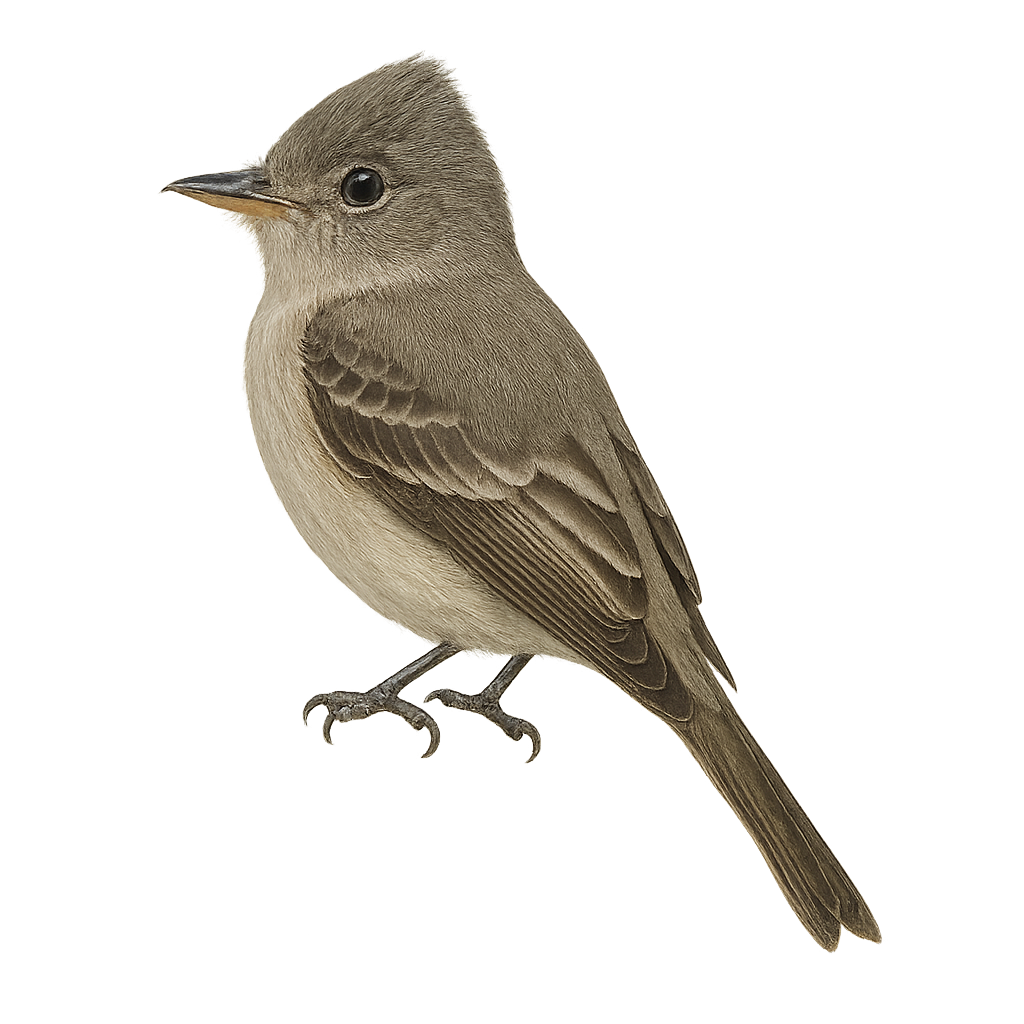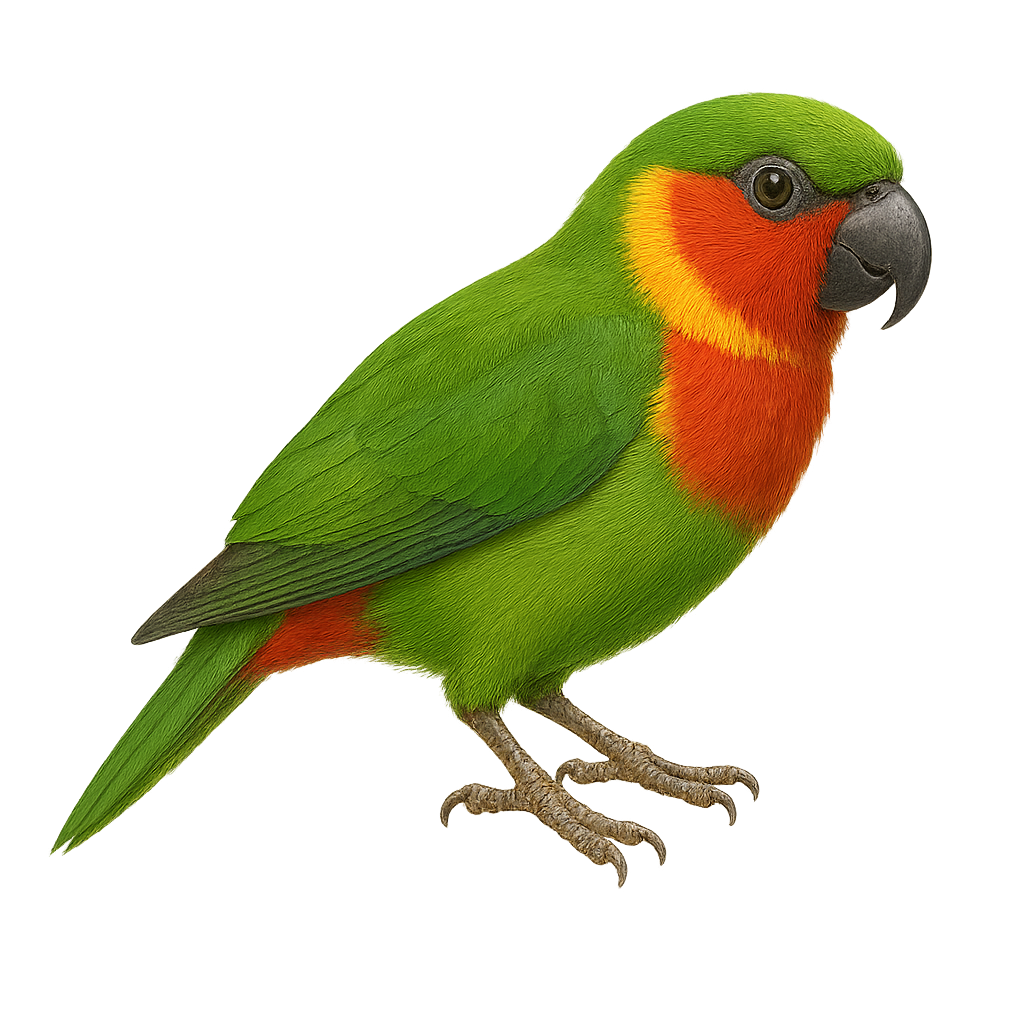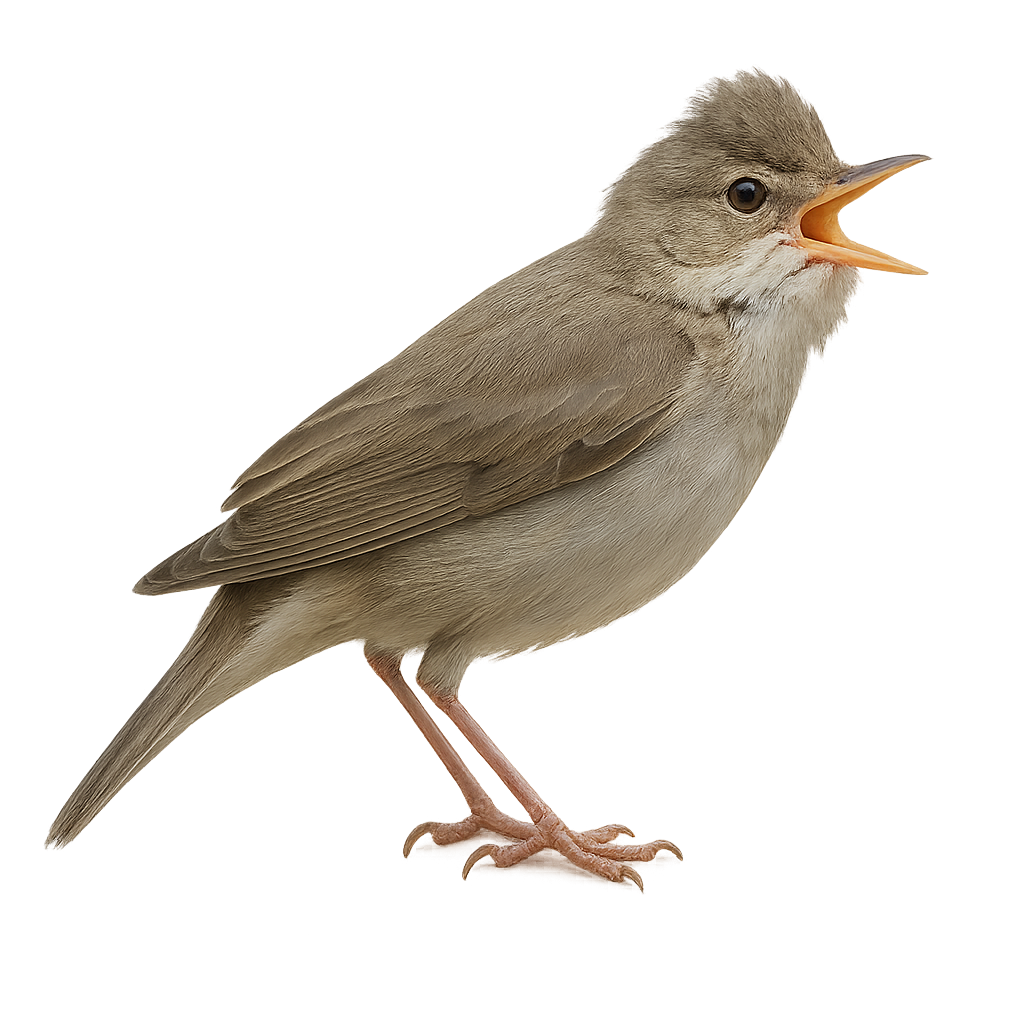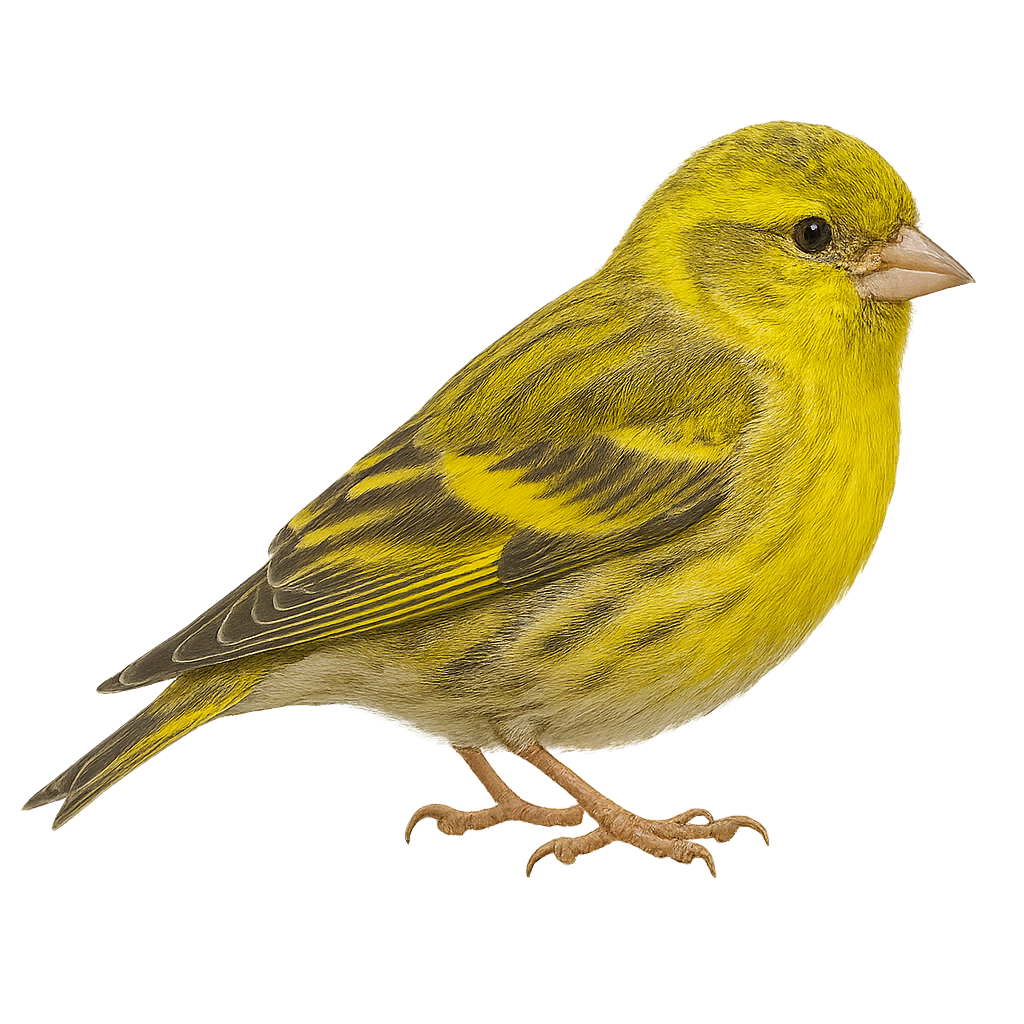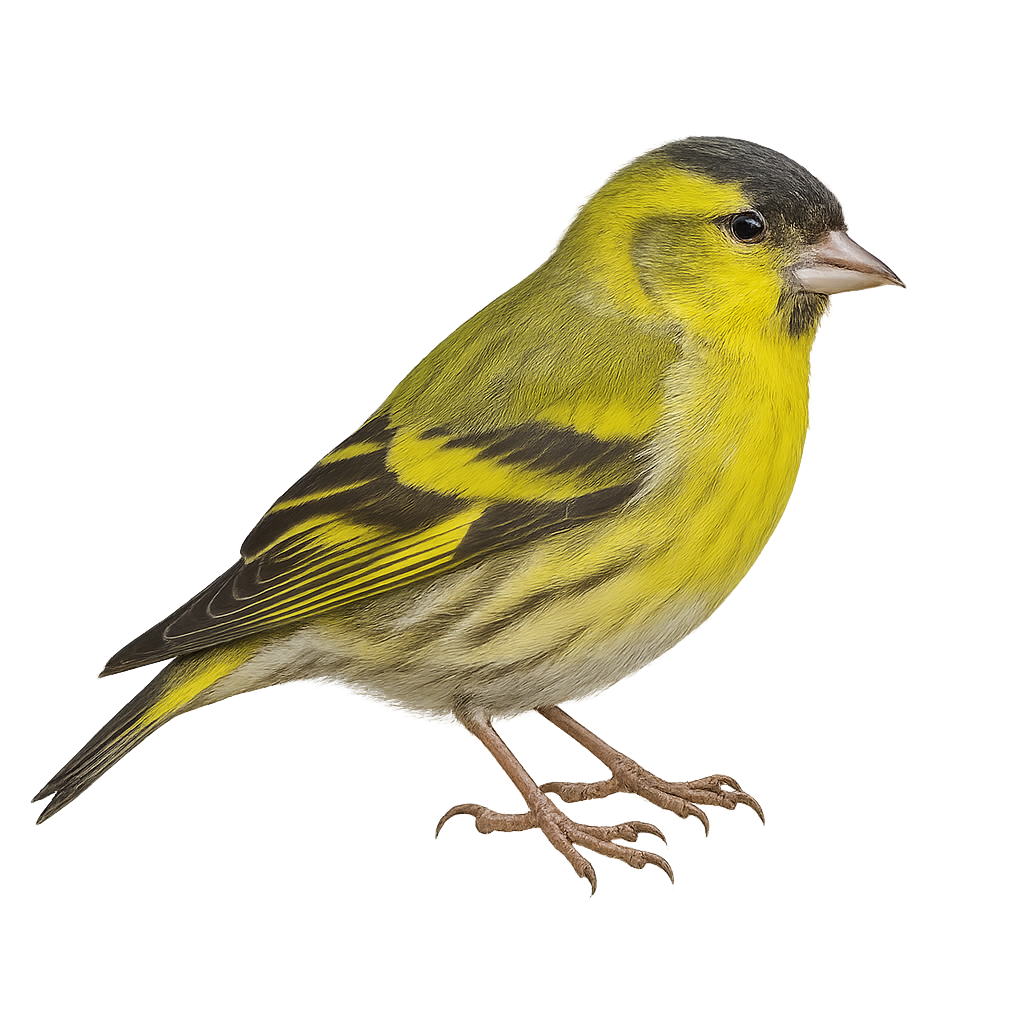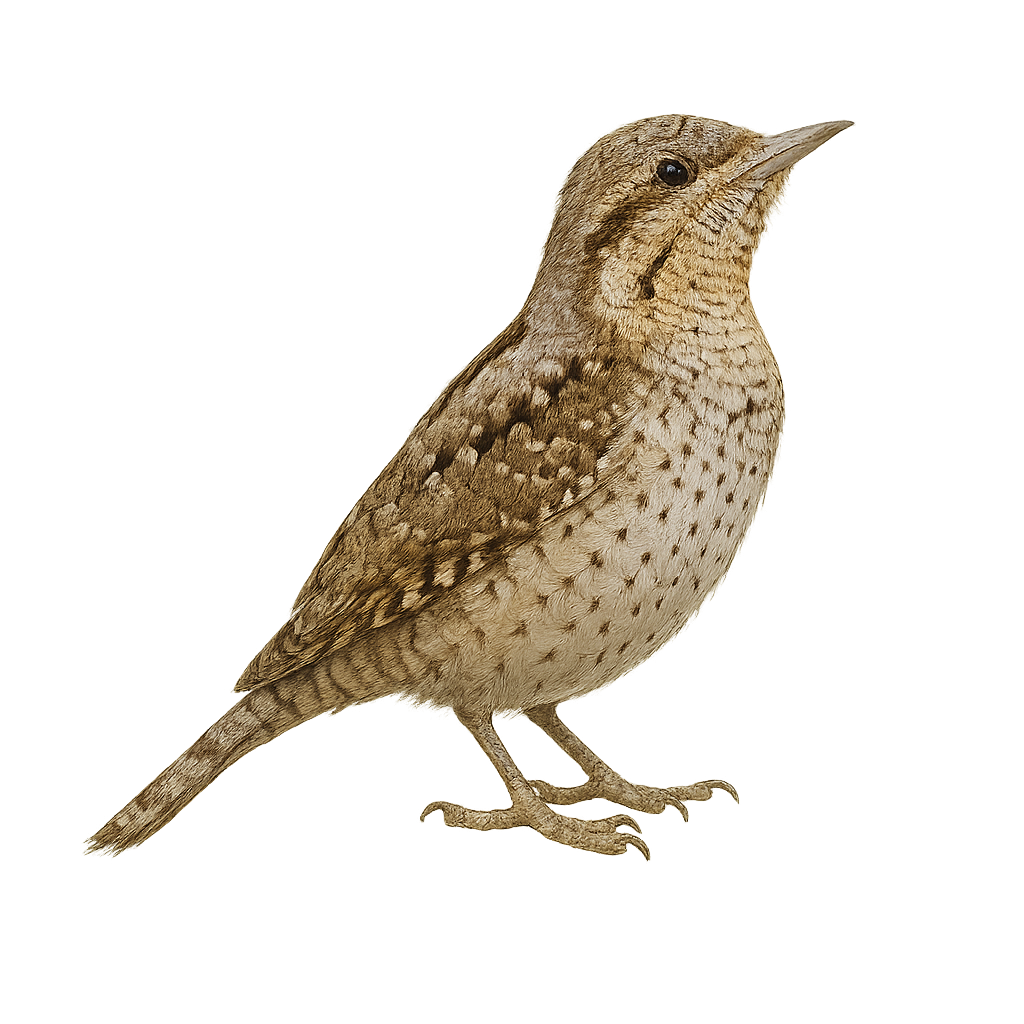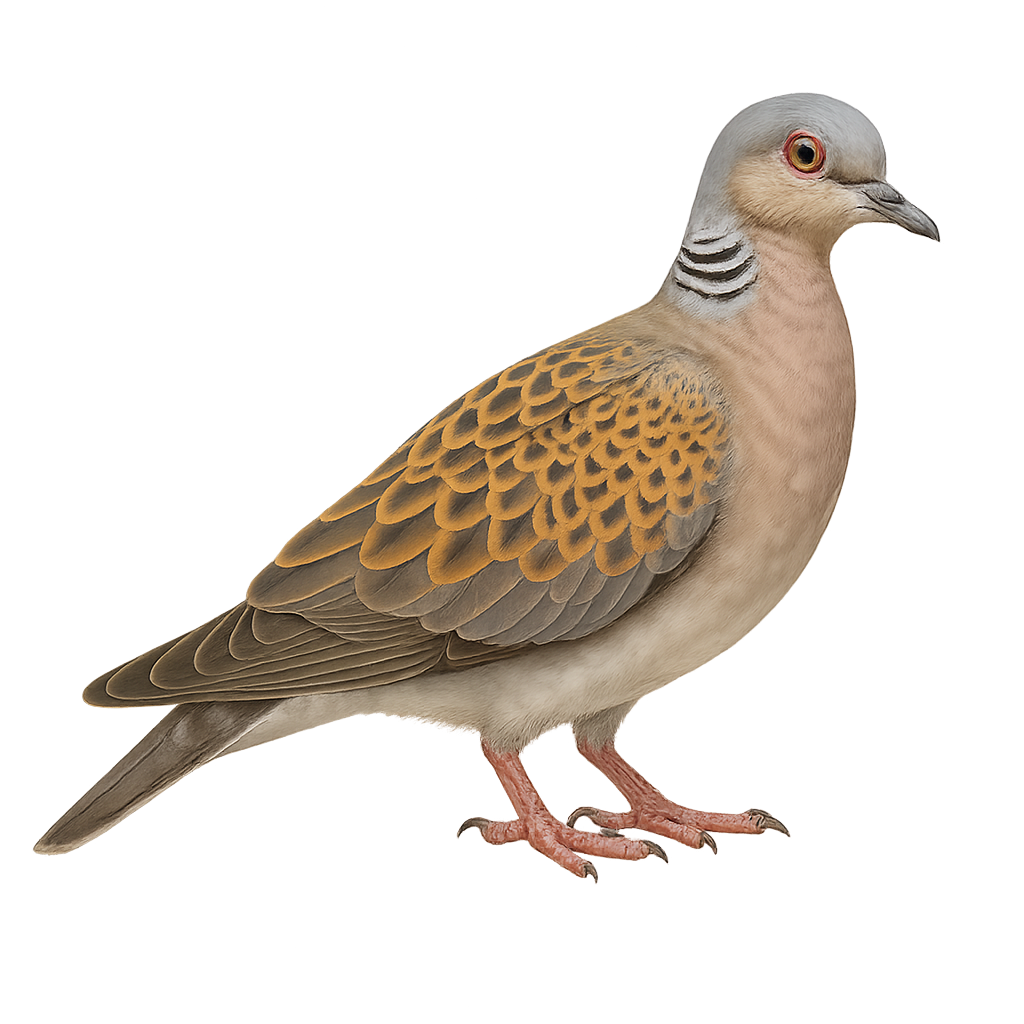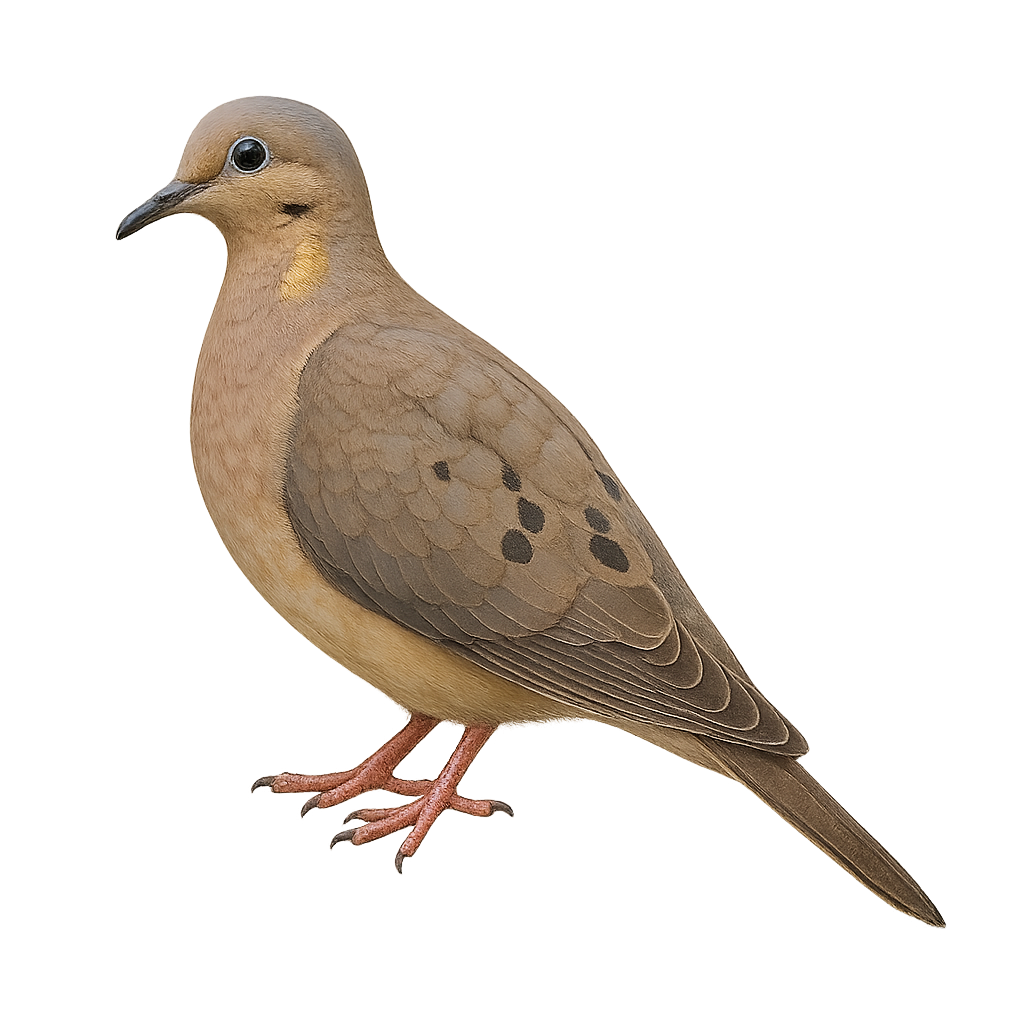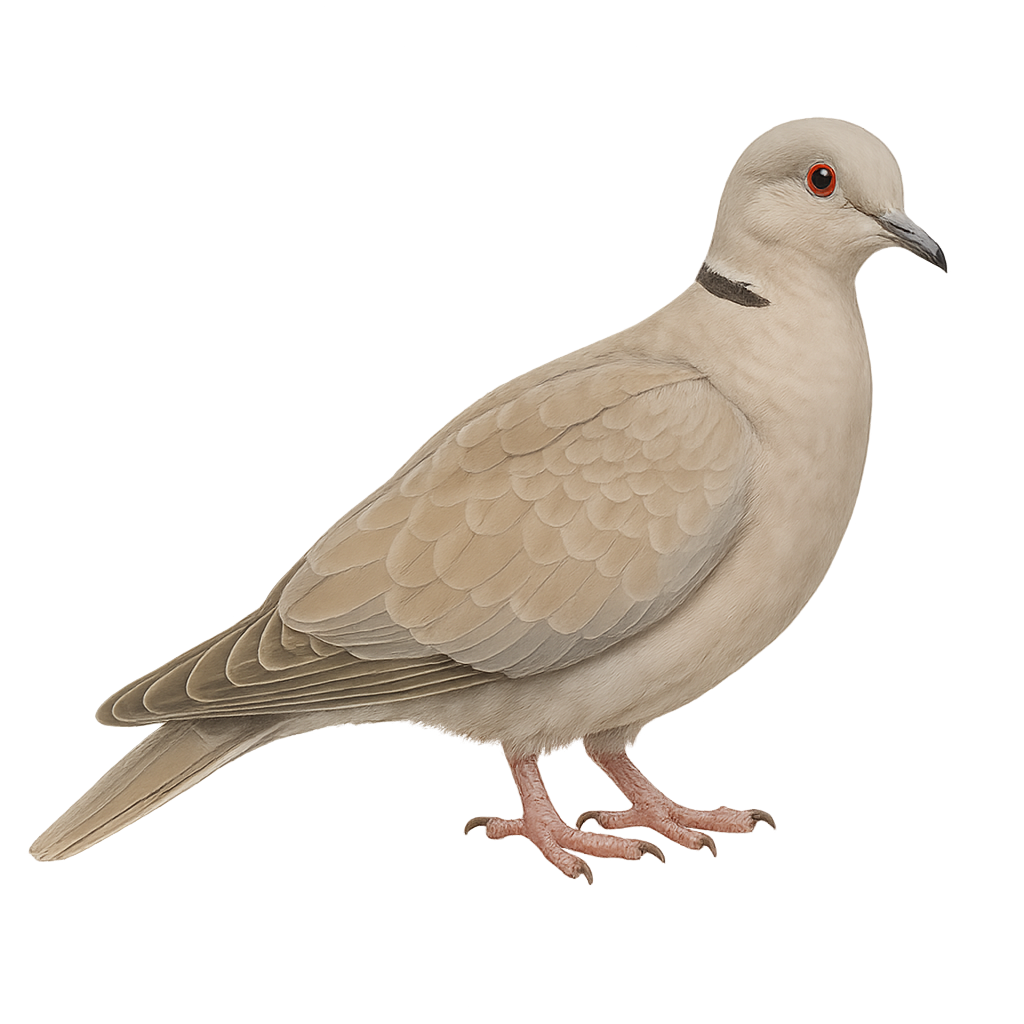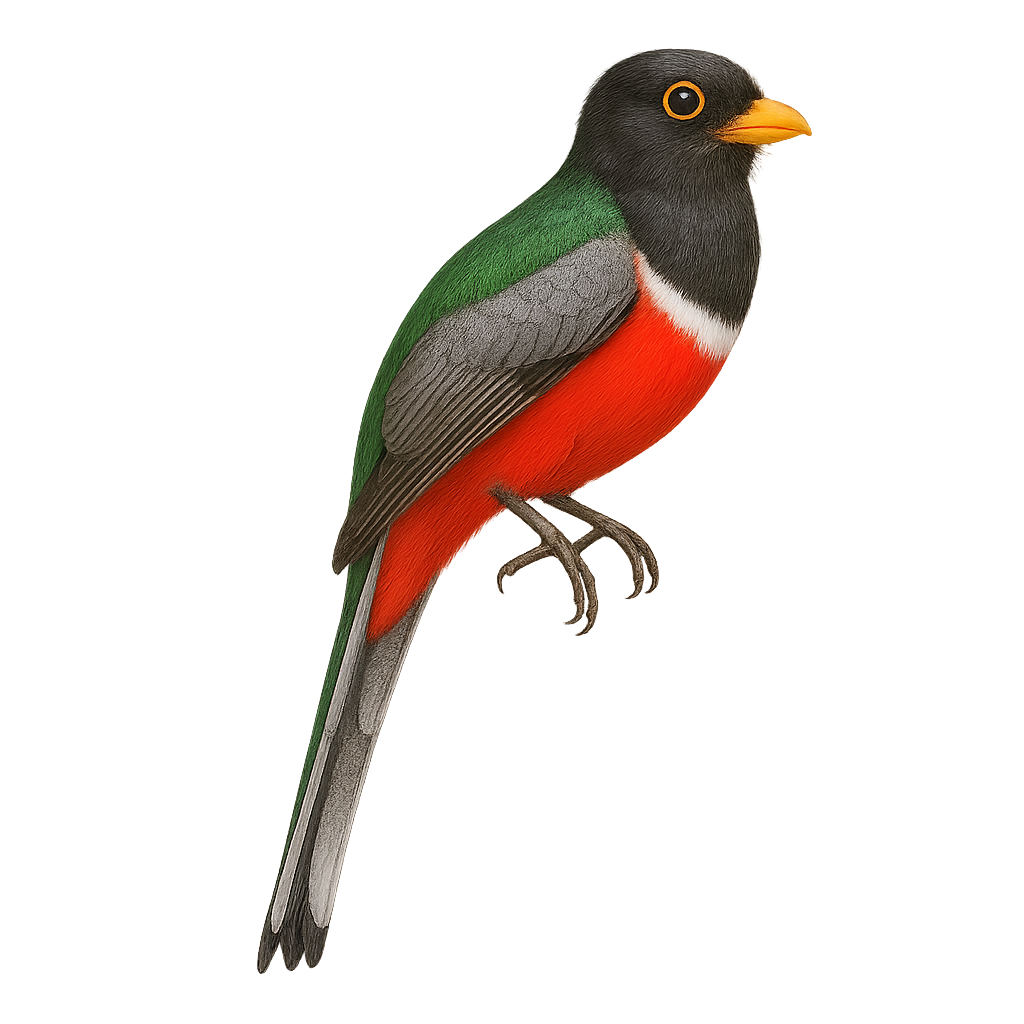The Eurasian Oystercatcher is a coastal bird easily recognizable by its black and white plumage and long orange beak. It measures about 40 to 45 cm in length, with a wingspan of 75 to 85 cm, and weighs between 300 and 400 g. Its beak is long and straight, ideal for digging up shellfish and other mollusks, which it primarily consumes, though it also feeds on worms and marine insects. The Eurasian Oystercatcher primarily inhabits the coasts of Europe, north-west Africa, and parts of Asia. It prefers beaches, estuaries, and mudflats where it can forage at low tide. This bird is very territorial and can be seen in small colonies during the breeding season, but typically lives alone or in small groups outside of that period. Although the species is not immediately endangered, it is sensitive to habitat loss, beach pollution, and human disturbance.
The European Golden Oriole is a brightly colored bird, easily recognizable by its striking plumage. The male is particularly vivid yellow with black wings, while the female has a more subdued plumage, mainly olive green and yellow. It measures about 25 cm in length and weighs between 40 and 60 g. This migratory passerine bird primarily inhabits open forests, orchards, and hedgerows, mostly in Europe, and migrates to North Africa for the winter. The European Golden Oriole is known for its melodious and powerful song, consisting of clear and repetitive notes. Its diet is primarily insectivorous, feeding on caterpillars, wasps, and other insects, but it also consumes fruits such as berries. This bird is discreet and hard to observe as it spends most of its time high up in trees. While its population is stable in some regions, it is threatened by deforestation, the loss of its natural habitat, and the reduction of its food sources due to pesticide use.
The Eckelberry's Manakin is a small, colorful bird belonging to the Pipridae family. It is primarily found in the lowland humid forests of Peru. This manakin is distinguished by its vibrant plumage, with shades of green, yellow, and red, allowing it to blend into its dense environment. Males are particularly known for their complex courtship displays, which include unique dances and vocalizations to attract females. These birds are generally solitary, except during the breeding season. They primarily feed on fruits and insects, thus contributing to seed dispersal in their habitat. Their song is often an indicator of their presence in the dense forest.
The emperor penguin is the largest penguin species, standing 1.1–1.3 m tall and weighing 22–45 kg, with striking black-and-white plumage, a pale yellow breast and orange patches at the bill’s base. Endemic to Antarctica, it breeds on sea ice during the austral winter, forming vast colonies to shelter from cold and marine predators. Following courtship displays in April–May, the female lays a single egg which she transfers to the male for incubation before returning to sea to feed.
The European Kingfisher is a small aquatic bird, easily recognized by its vivid plumage and bright colors. It measures about 17 to 19 cm in length and weighs between 30 and 40 g. Its back is a brilliant metallic blue, while its belly is a bright orange. Its bill is long, straight, and pointed, perfectly suited for catching fish and aquatic insects. This kingfisher primarily lives along rivers, lakes, and canals in Europe, where it perches on branches or rocks near the water. When hunting, it dives quickly in a headfirst plunge to capture its prey, often using its excellent vision to locate fish underwater. The European Kingfisher is a solitary bird, defending its territory by emitting a sharp call. While it is relatively common in many parts of Europe, it can be threatened by water pollution and habitat destruction.
The European blackbird is a very common passerine bird found throughout Europe, Asia Minor, and North Africa. It is easily recognized by its glossy black plumage and bright yellow beak. This passerine primarily feeds on earthworms, insects, and fruit. Although it is often seen in gardens and urban parks, it remains a relatively discreet bird. It is also highly regarded for its melodious song, especially in spring.
The Eastern Bluebird, or Sialia sialis, is a small songbird belonging to the Turdidae family. It is easily recognizable by its bright blue plumage on the back and wings, contrasting with a reddish-orange chest and white belly. Males display more vibrant colors than females, who have duller plumage. This bird primarily feeds on insects but also consumes berries, especially in winter. It inhabits open fields, orchards, and sparse woodlands. The Eastern Bluebird is known for its melodious song and its ability to adapt to artificial nest boxes, which has helped stabilize its populations after a decline due to habitat loss and competition with introduced species.
The Stone-curlew is a large, ground-dwelling bird primarily found in open and arid regions of Europe, the Middle East, and North Africa. It measures about 40 to 45 cm in height and weighs between 350 and 500 g. What distinguishes the Stone-curlew is its cryptic plumage, generally brown-gray in color, allowing it to blend effectively among vegetation or rocks. It has large yellow eyes and a distinctive call, which is often heard during the night, hence its name. This bird primarily feeds on insects, worms, and small invertebrates found on the ground. The Stone-curlew is mostly active at dusk and at night, feeding slowly while scanning its surroundings. While not in immediate danger, it faces threats from habitat loss, intensive agriculture, and human disturbance.
The Emperor Goose, Anser canagicus, is a medium-sized waterfowl species known for its bluish-gray plumage and distinctive white head. It features a pink bill and bright orange legs. Primarily found in Alaska and Siberia, it inhabits coastal areas and estuaries. The Emperor Goose is a migratory species that moves south for the winter. Often seen in groups, it feeds on aquatic plants, seeds, and small invertebrates. Although its conservation status is concerning, it is protected by international laws. Its beauty and social behavior make it a favored subject for birdwatchers.
The Elegant Euphonia, or Chlorophonia elegantissima, is a small, colorful bird from the Fringillidae family, primarily found in the tropical and subtropical forests of Central America. It is easily recognizable by its vibrant plumage, featuring a bright blue head, yellow belly, and olive-green back. Both males and females have similar colors, although females are slightly duller. These birds are often seen in pairs or small groups, feeding mainly on fruits and berries. Their melodious and varied song is a distinctive feature of their behavior, often used to mark their territory or attract a mate. Although they are relatively tolerant of human presence, they prefer dense wooded areas where they can hide among the foliage.
The Egyptian Goose, Alopochen aegyptiaca, is a medium-sized waterbird known for its distinctive brown, white, and black plumage, with red markings around the eyes. Native to sub-Saharan Africa, it has been introduced to various regions in Europe. It prefers habitats near freshwater, such as lakes, rivers, and marshes. This bird is often seen in pairs or small family groups. Although primarily herbivorous, it also feeds on insects and small invertebrates. The Egyptian Goose is known for its territorial behavior, especially during the breeding season. It is capable of adapting to various environments, which explains its growing presence in urban areas.
The Eastern Screech Owl, Megascops asio, is a small owl native to eastern North America. It inhabits forests, parks, and suburban areas, and is known for its excellent camouflage, with plumage ranging from gray to reddish-brown. Measuring about 16 to 25 cm in length with a wingspan of 46 to 61 cm, it primarily feeds on insects, small mammals, and occasionally small birds. Its call, a soft, monotone trill, is often heard at dusk and during the night.
The Three-toed Woodpecker is a small bird from the woodpecker family, primarily found in coniferous forests of Europe and Asia. It measures about 20 cm in length, with a wingspan of 40 to 45 cm, and weighs between 50 and 70 g. Its plumage is primarily black and white, with a distinctive yellow patch on the top of its head, and white streaks on its wings. What distinguishes the Three-toed Woodpecker is the presence of three toes on each foot, which allows it to climb with great agility. It primarily feeds on insect larvae, which it extracts from the bark of trees using its strong beak. The Three-toed Woodpecker lives in old forests and dense wooded areas, and although it is not currently threatened, it is vulnerable to habitat loss and human disturbance.
The Eastern Wood-Pewee, or Contopus virens, is a small passerine bird belonging to the Tyrannidae family. It is primarily found in the deciduous and mixed forests of North America, where it is recognized for its melodious and repetitive song. Modest in size, it features an olive-gray plumage on its back and lighter on its belly, with wings slightly barred with white. This migratory bird winters in Central and South America. It mainly feeds on insects, which it catches in flight with its skilled aerial acrobatics. The Eastern Wood-Pewee is often solitary and vigorously defends its territory during the breeding season. Although its habitat is threatened by deforestation, it is currently classified as Least Concern by the IUCN.
The Edwards's Fig Parrot is a medium-sized parrot species endemic to New Guinea. It is characterized by its bright green plumage, with shades of blue and red around the head and neck. This parrot primarily inhabits tropical rainforests, where it feeds on fruits, seeds, and flowers. It is often seen in small groups or pairs, moving nimbly among the branches. Although its habitat is relatively stable, it is sometimes threatened by deforestation. Its song is melodious, consisting of whistles and chirps.
The Eurasian robin is a small bird from the Muscicapidae family, easily recognized by its bright red breast. It is widely distributed across Europe, Western Asia, and North Africa. This bird is mostly active during the day, feeding mainly on insects, worms, and berries. Although very territorial, it is admired by photographers for its curious nature and active behavior.
The Eurasian reed warbler is a small migratory passerine, 11–13 cm long, with olive-brown plumage and a repetitive, hiss-like song. It inhabits reed beds and freshwater marshes, feeding on insects and larvae. During the breeding season, the male sings from an exposed perch and the pair builds a vase-shaped woven nest within dense reed vegetation.
Anas crecca is the smallest dabbling duck in Eurasia, measuring between 33 and 38 cm in length with a wingspan of 53 to 58 cm. The male in breeding plumage is distinguished by a chestnut head with an iridescent green band from the eye to the nape, a white collar, and a body finely vermiculated grey. The female is brown speckled, with a light line at the eye and a light spot on the rump. It frequents shallow wetlands such as marshes, ponds, rice fields, and mudflats, often with dense aquatic vegetation. It primarily feeds on seeds of aquatic plants, algae, small invertebrates, and insect larvae. Reproduction occurs between May and July, with the female building a well-hidden nest in vegetation, where she lays 8 to 11 eggs. Incubation lasts about 21 to 23 days. A migratory species, it winters in Europe, Asia, and North Africa.
The European serin is a small passerine bird found primarily in gardens, orchards, and urban areas across Europe and the Middle East. It is distinguished by its bright yellow plumage, dark wings, and small size. This small bird primarily feeds on seeds, which it finds in trees, bushes, and grasses. It is also known for its high-pitched, melodious song, which it performs during the breeding season.
The Eurasian nuthatch is a small woodland bird found primarily in mixed and deciduous forests across Europe and Asia. It is easily recognized by its blue-grey and orange plumage, light belly, and distinctive black mask around its eyes. This bird is particularly known for its ability to climb upside down on tree trunks, allowing it to reach areas inaccessible to other birds. It primarily feeds on insects, seeds, and nuts.
The Edwards's Tanager, scientifically known as Bangsia edwardsi, is a vibrant and captivating bird native to the humid montane forests of Colombia and Ecuador. This medium-sized passerine boasts a striking plumage with shades of blue and green that catch the eye. Often seen in small groups, it primarily feeds on fruits and insects. Its natural habitat ranges from 1,200 to 2,400 meters in altitude, where it plays a crucial role in seed dispersal, aiding forest regeneration. Although its conservation status is concerning, efforts are underway to protect its habitat and ensure its long-term survival.
The European Stonechat, Saxicola torquata, is a small passerine bird belonging to the Muscicapidae family. It is easily identifiable by its distinctive plumage: the male has a black head, white throat, and orange-brown back, while the female is duller with brownish tones. This bird is often seen perched on bushes or fences, watching for insects to feed on. It inhabits open areas such as meadows, heaths, and agricultural lands. The European Stonechat is a resident bird in temperate regions, but some populations migrate south in winter. It is known for its melodious song and short, sharp calls.
The Eurasian siskin is a small passerine of 11–12 cm with yellow-green plumage streaked with black and dark wings. It inhabits coniferous and mixed woodlands, especially alder and birch stands, feeding mainly on cone seeds and small herbaceous seeds. During breeding, pairs nest in mid-canopy conifers and raise 2–3 broods per year.
The Elegant Crested Tinamou, or Eudromia elegans, is a ground-dwelling bird native to South America, mainly found in Argentina. It is recognizable by its distinctive crest and speckled brown plumage, which helps it blend into its environment. Measuring about 40 cm in length, it has a robust body and strong legs adapted for rapid running. Although capable of flight, it prefers to run to escape predators. Its natural habitat includes open grasslands, savannas, and shrublands. The Elegant Crested Tinamou is a gregarious bird, often seen in small groups. It primarily feeds on seeds, fruits, and insects, playing an important role in seed dispersal and insect population control.
The Eurasian Wryneck is a small bird of the woodpecker family, primarily found in open forests and clearings across Europe, especially in France, Spain, Italy, and Russia. It typically measures about 22 cm in length and weighs between 50 and 60 g. Its plumage is mainly brown, with dark spot-like patterns on the back and wings, and a light-colored throat. The Eurasian Wryneck feeds primarily on ants and other insects that it finds on tree trunks or branches. It is often observed pecking at tree bark in search of food. While its population is generally stable, the Eurasian Wryneck is sometimes threatened by habitat loss due to deforestation and changes in agriculture.
The Emerald Toucanet is a small forest toucan recognizable by its vibrant green plumage, bicolored bill, and compact size. Males and females are very similar, though males may have a slightly longer bill. It inhabits humid mountain forests of Central and South America, from Mexico to northern Bolivia, often seen in small groups in the canopy or foraging for fruit. It is omnivorous, feeding on fruit, insects, small reptiles, and occasionally bird eggs. Though locally threatened by deforestation, it remains widespread overall.
The Turtle Dove is a small, slender dove measuring between 25 and 28 cm in length with a wingspan of 45 to 50 cm. Its plumage is characterized by a rosy chest, a back speckled with black, and a gray-blue head adorned with black and white spots on the neck. It emits a soft, rolling cooing sound, often heard in spring and summer. It frequents clear woods, hedges, and open agricultural areas, where it feeds primarily on seeds fallen to the ground. Breeding occurs from May to July, with one or two clutches of two white eggs. The young leave the nest between 19 and 21 days after hatching. A migratory species, it winters in sub-Saharan Africa. Listed as "Vulnerable" by the IUCN.
The Eared Dove, Zenaida auriculata, is a medium-sized bird, measuring about 24 cm in length. It has light brown plumage with pinkish hues on the chest and distinctive black spots behind the eyes. The wings are adorned with black and white bands visible in flight. This bird is widespread in South America, inhabiting various environments such as savannas, agricultural areas, and open forests. The Eared Dove is known for its soft, melodious song, often heard at dawn and dusk. It primarily feeds on seeds and small fruits found on the ground.
The Eurasian Collared Dove is a medium-sized dove, measuring about 32 cm in length with a wingspan of 47 to 55 cm. Its plumage is grayish-beige with pinkish hues on the head and chest. It is characterized by a black half-collar edged with white on the back of its neck. It emits a soft cooing sound, often described as "hoo-hoo-hoo-hoo." Originally from South Asia, it has rapidly expanded into Europe, North Africa, and the Americas. It frequents urban, suburban, and agricultural areas, feeding primarily on seeds, berries, and buds. Breeding can occur year-round, with an average of three to four broods per year. The young leave the nest about 19 days after hatching. The species is listed as Least Concern by the IUCN.
The Elegant Trogon is a colorful and fascinating bird, primarily found in the tropical and subtropical forests of Central and North America. It features a striking plumage with shades of green, red, and white, making it easily recognizable. Males display a metallic green head and back, while their chest is bright red. Females, on the other hand, have more subdued tones, with shades of brown and gray. This bird is often seen perched silently in trees, feeding on insects and fruits. It is known for its melodious song, which resonates in the forests it inhabits. The Elegant Trogon is a symbol of the biodiversity of the regions it inhabits and is appreciated by birdwatchers and photographers for its stunning beauty.




